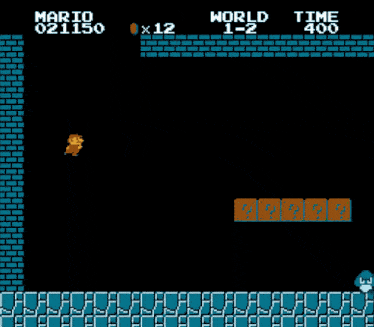
In today’s world, speedrunning thrives on streaming platforms like Twitch or events like Games Done Quick. These events raise millions for charity while showcasing incredible gaming feats. Speedrunning has evolved from playing on original consoles or PCs to using emulators that enable retro gaming on modern systems. While this expands accessibility, strict rules ensure fair competition.

Speedrunning is incredibly diverse, with categories for every type of player and game. Each game has its own set of rules and categories that challenge runners in unique ways. Two popular category types include:
- Any% The goal is to finish the game as fast as possible, using any tricks, skips, or glitches allowed.
- 100% Players must complete every task or collect every item, making it a more comprehensive and often lengthier challenge.
Below are two examples of category trees, showcasing how games differ in structure and speedrunning possibilities. Hover over the nodes to see the rules of the corresponding category (if they are defined on speedrun.com).
In Minecraft: Java Edition, the tree has a relatively simple shape, as the game is not divided into levels. Its categories focus on goals like defeating the Ender Dragon as fast as possible. Since there are no per-level runs, the tree is straightforward compared to other games.
In contrast, Portal has a much more complex category tree. The game features both full-game and per-level categories, which greatly expand its scope for speedrunners. While per-level runs offer fascinating insights into specific parts of the game, they were excluded from this analysis due to the sheer volume of data they would introduce.
These examples highlight the endless variety of speedrunning category trees, as every game presents unique challenges, rules, and opportunities for creativity. Whether a game is open-ended like Minecraft or structured like Portal, the diversity in speedrunning reflects the ingenuity of its community.
Speedrunning popularity varies across games, with some titles standing out for their active communities and high submission counts. These games often feature unique mechanics, competitive leaderboards, or nostalgia that drives runners to perfect their craft.
Above, a scatter plot of 100% runs in The Legend of Zelda: Breath of the Wild (BotW) shows how run times have evolved over time. Each point represents a completed run, with faster times indicating significant breakthroughs, new strategies, or the discovery of game-breaking glitches. Hover above the points to see the run’s details.
The figure below is an interactive visualization that allows you to explore the dataset of runs by game and category in depth. Click on a bar and start exploring!
Speedrunning is more than an individual pursuit—it thrives on collaboration, shared knowledge, and competition. Communities form around specific games, helping runners discover tricks, refine strategies, and improve their times.
The network graph above shows connections between the top 50 games, grouped by clusters. These clusters were identified using a greedy modularity algorithm, which detects closely linked communities. Nodes represent games, while edges indicate shared runners. The thicker the edge, the more players have submitted runs for both games. You can hover over the communities in the legend to learn more about them.
Speedrunning trends change over time, influenced by new releases, rediscovered classics, or viral moments on streaming platforms. The river plot below illustrates the monthly submission trends for the top 10 games in terms of run counts. Hover over the legend to get a short description of each game.
Each stream represents a game, with its width corresponding to the number of runs submitted that month. Notice how certain titles surge during specific periods, often tied to cultural events, game updates, or charity marathons like Games Done Quick.
Speedrunning is a global phenomenon, with players from around the world competing for top times. But which countries are the most competitive? To answer this question, we created a scoring system based on the positions of runners on the leaderboards.
For each run, the position of the runner at the time of submission determines the score they contribute to their country. The scoring system assigns points as follows:
Scores are calculated monthly and summed across all games to give each country a total score. The scoring system can be formalized as:
Where:
- : Total score for country .
- : The set of all games.
- : The set of runners from country for game .
- : The function mapping the position of runner to a score, based on their position (see array above).
The animated bar race below visualizes how country scores evolve over time, highlighting key shifts in competitiveness. Afterward, the colored world map shows the cumulative scores as of November 2023, revealing which countries dominate the global speedrunning scene. Click on the Start race button to begin the animation.
Unsurprisingly, countries with larger player bases, such as the United States or Japan tend to score highly. However, smaller countries like Canada or the UK, with passionate communities, often punch above their weight, making the competition even more exciting!
The dataset has mainly been obtained from the fantastic work of Alex Merren, although some additional data (game logo, game covers, game platforms) has been scraped by me using the public API of speedrun.com. The data has been wrangled and analyzed with Python and the visuals are made with ECharts (and a lot of sweat).
Hi there, I'm Colas!
I'm transitioning from academia to pursue my passion for data visualization. This is my first project, and I’m excited to share it with you! Your support means everything, whether it’s through a donation, sharing my work, or spreading the word.

Disclaimer: All trademarks, logos, and images displayed on this website are the property of their respective owners. They are used here for informational purposes and to facilitate a better experience for visitors. This website is not affiliated with, endorsed, sponsored, or specifically approved by any video game company or its licensors. All data, including images, has been sourced from the public API of speedrun.com. If you are a copyright or trademark owner and believe your material has been used in an unauthorized way, please contact me immediately and and I will address the issue promptly.